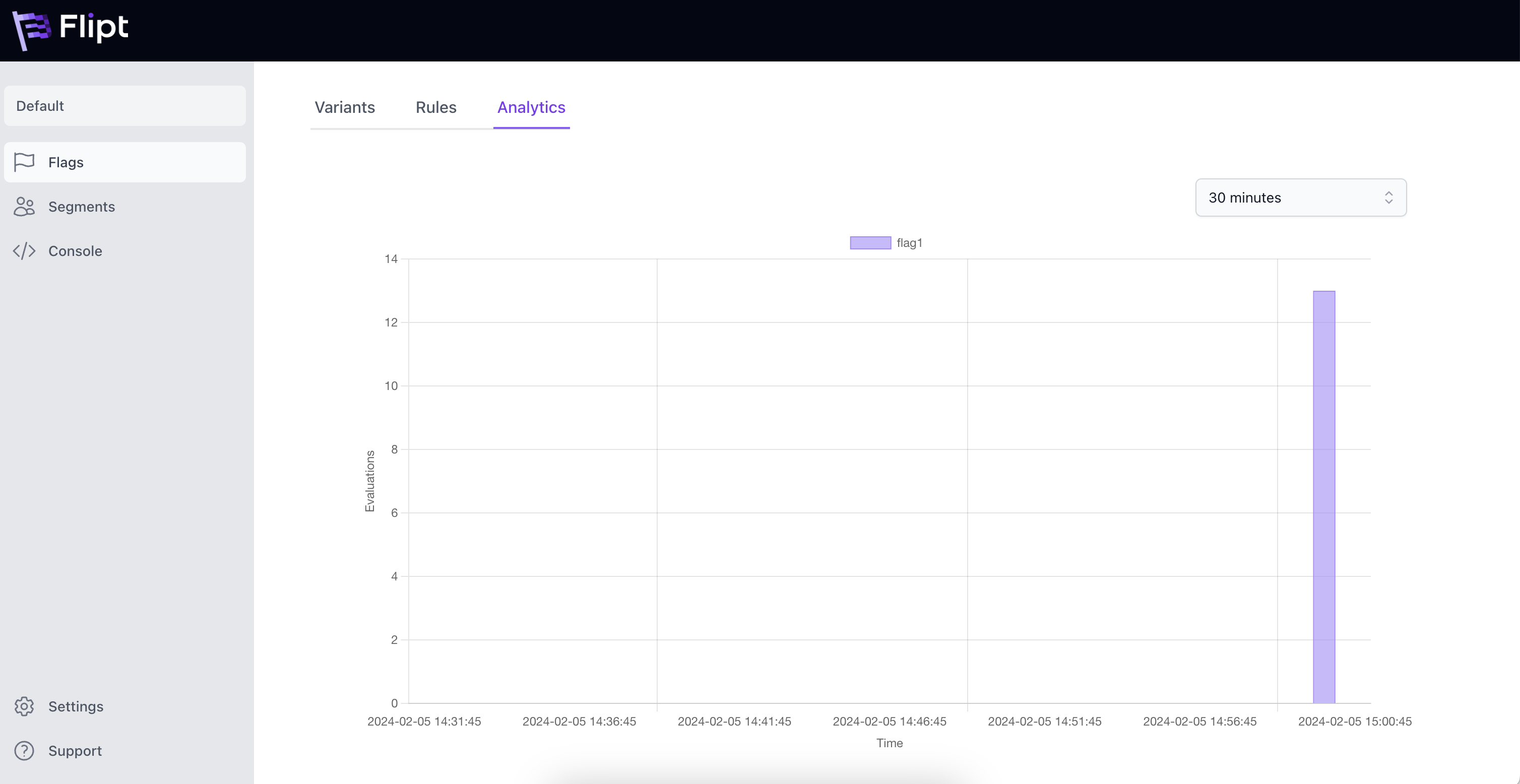Analytics
As of v1.37.0, Flipt includes functionality for reporting analytical data to a configurable storage engine. Currently, Flipt has support for collecting data into the following storage engines: The data that gets collected currently includes:- Flag Evaluation Count
 The image above shows the past 30 minutes of the flag
The image above shows the past 30 minutes of the flag flag1 evaluation counts.
Origin
Analytics are currently only collected as they pass through the evaluation server. This means that analytics will be captured if you are using the REST or GRPC APIs via one of our Server SDKs or GRPC SDKs for evaluations. We have plans to support collecting analytics for Client-Side evaluations in the future.ClickHouse
You can use a self-hosted ClickHouse instance or a managed instance to store your analytics data. We highly recommend using a separate database for analytics produced by Flipt. This ensures that Flipt analytic data can be logically isolated from the rest of your Clickhouse data.The analytics database must be created before Flipt will be able to write
analytical data and run any migrations. See our
migration section for more info.
Configuration
To configure Flipt to use ClickHouse for analytics, you will need to add the following configuration to yourconfig.yml file or environment variables:
- Environment Variables
- Configuration YAML

